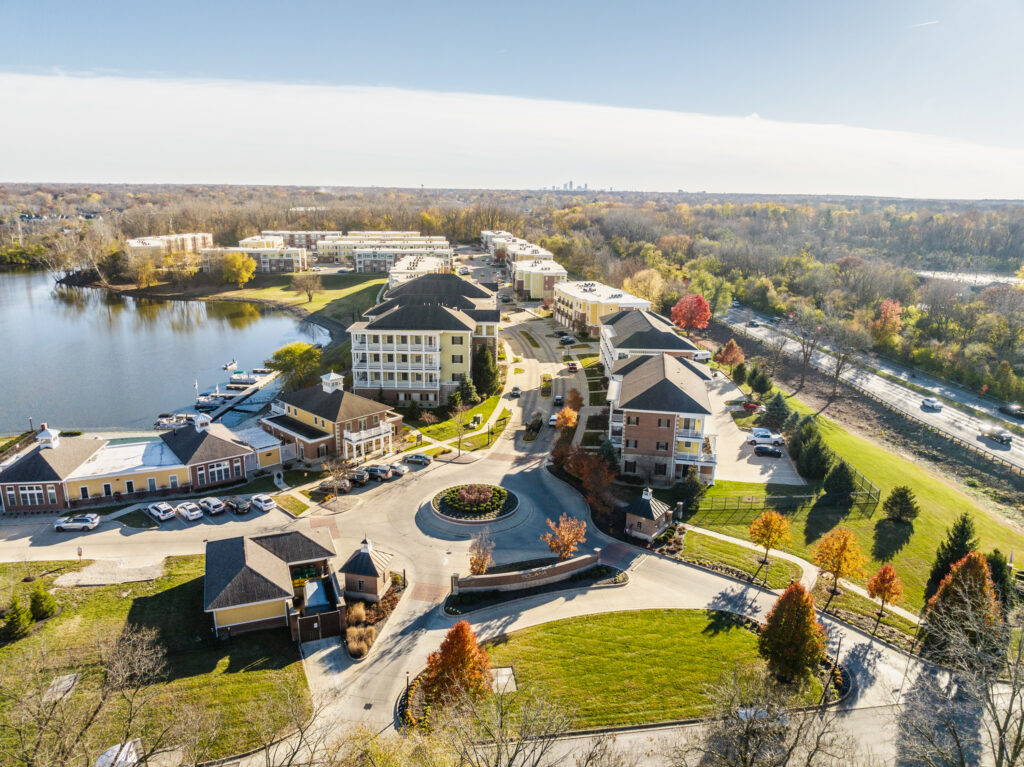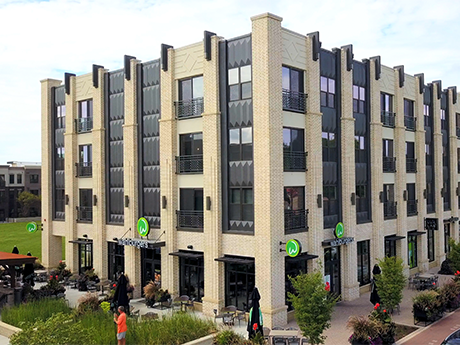The capital markets continue to present challenges and create confusion across the U.S. transaction space. Most markets outside the Midwest have retreated toward a rent-growth flatline, or worse. However, in the midst of it all, the metro area stands like a pillar of stability.
No longer known simply for its manufacturing prowess, Indianapolis boasts a long list of economic strengths. These include a diverse, sustainable and growing employment base; predictable fundamentals, including controlled levels of supply; a forward-thinking investment in infrastructure; and a growing base of capital. These capital sources, both new and familiar, are seeking to launch or deepen exposure in this darling of the Midwest.
Local Economy Has Evolved, Matured
First, a reminder of the humble beginnings of this predictable performer. For most of the past several decades, Indianapolis quietly resided in the shadows of the primary markets of Chicago and New York City as well as markets such as Denver, Dallas, Charlotte, Nashville and many others.
The market was relegated to “flyover” status and was favored by only the most risk-averse investors. For those who call Indianapolis home, the relatively recently earned claims to fame of this medium-sized Midwestern metro are well-deserved and long overdue.
Indiana is home to the largest Salesforce and FedEx operations outside the companies’ respective headquarters in San Francisco and Memphis. The city is also home to nine Fortune 1,000 companies. Within the state, 57 colleges and universities enroll 351,439 students. These institutions are training an intelligent future workforce that is increasingly choosing to remain in the state.
The multifamily fundamentals are strong in Indianapolis. According to Yardi Matrix, renewal rents grew by 8 percent between March 2023 and March 2024.
The market also boasts the top rate of retention (67.4 percent) of all U.S. markets surveyed by Yardi Matrix in the United States.
According to RealPage data, Indy is one of three U.S. markets expected to achieve more than 3.5 percent rent growth this year. Lastly, Yardi Matrix ranks Indy as the third most affordable city in which to rent an apartment.
In terms of infrastructure, there are eight U.S. interstates that connect to I-465, the metro’s beltway, more than any other city in the nation. The city is positioned midway on the I-65 corridor. Nashville, Louisville, Indy and Chicago handle 36 percent of all U.S. air cargo, which then is distributed up and down I-65 and laterally across the nation.
Finally, Indy’s north suburbs contain more than 200 roundabouts, more than any other metro in the United States, eliminating traffic lights, reducing commute times and improving efficiency.
Once known primarily for its prowess as a center of manufacturing, this aspiring market took advantage of its natural resources — namely an educated workforce, a strong work ethic and central location — and pivoted into more dynamic, higher-paying sectors.
While Eli Lilly, the metaphorical grandfather of the metro area, remains an anchor of employment, innovation and a benefactor of countless city projects and organizations, the pharmaceutical giant is just the beginning of the story.
Salesforce, the namesake of the Salesforce Tower in the core of downtown Indy, employs more than 2,000 people, making it the largest U.S. Salesforce operation outside of San Francisco. Infosys, an Indiana-based information technology firm, built a global training operation in the west suburbs in 2018. This move and other like it are expected to elevate Indy as a national leader in the tech space.
While not glamorous, logistics is a monumentally important sector in the local economy. Its significance cannot be overstated in steering the region through the tumultuous times of COVID, when Americans turned to e-commerce. This centrally located U.S. market is within a 24-hour drive of 80 percent of the U.S. population, thus fairly earning it the title of “Crossroads of America.”
And with IU Health well underway on a $4.3 billion expansion of its former Methodist Hospital medical center just north of the central business district, the bio/life sciences and medical sectors also support a stable and growing employment base in the metro.

Multifamily Deals Continue to Transact
A market that historically only aspired to touch $500 million in annual multifamily transactions has twice in the past three years eclipsed $2 billion, according to Walker & Dunlop, a run that surely would have continued were it not for the crippling effects of rate volatility the past two years.
Approximately $6.3 billion in multifamily product has traded in the past four years in this highly liquid metro, per Walker & Dunlop.
Additionally, the low-risk nature of the Midwest and a fiscally conservative local government favorably influence the underwriting of insurance and real estate taxes, which have plagued underwriting in many investment markets across the country.
A recent trade of particular significance was the VER at Proscenium, developed by Tony Birkla and Birkla Investment Group (BIG). Built in 2021, the asset lies near the center of the city of Carmel, Indiana, the epicenter of high-wage employment, amenities and infrastructure in the metro. VER at Proscenium is within walking distance of the nationally acclaimed Monon Trail, a paved former rail line, and is home to the metro’s only Wahlburgers.
Though the transaction had a number of complicating factors and took place in one of the most tumultuous times relative to interest rate volatility, the market responded with 20 offers to purchase the asset and garnered record pricing per unit for the metro’s outer-ring suburbs. This was a resounding endorsement of the north suburbs.
Walker & Dunlop also recently marketed Solana Apartments, which consisted of 384 units that were built in 2014. Thirty-five offers were procured, an all-time record level of bidding on any Indianapolis multifamily asset.
Throughout the 30-day marketing period, 231 offering memoranda were released to qualified investors, 24 of which were sources who had never explored the Indianapolis market. The asset is currently under contract and scheduled to close in the second quarter of this year.
Developers Continue to Build at a Sustainable Pace
Levels of supply are restrained and absorbable in this market. Once known for its indiscriminately placed apartment developments in seemingly randomly selected former cornfields, apartment development now is strategically located in employment centers, pedestrian hubs and centers of attraction.
Development hot spots include downtown Indy, Broad Ripple (an entertainment district that’s home to pubs, restaurants, boutiques and art galleries), downtown Carmel, downtown Fishers, Westfield, Noblesville, Whitestown, Greenwood, Plainfield and elsewhere in Hendricks County.
With less than 2 percent of the metro’s stock being delivered annually on average, absorption is not a market concern. The post-COVID, supply-starved era produced fewer than 1,400 units in 2022, and peak deliveries are expected to cross just over the 6,000-unit threshold this year before retreating to less than 50 percent of peak levels in 2025.
Consequently, like other markets, 2025 and beyond are expected to be among the best periods of lease-up on record.
As the investment world continues to work out its strategies and timing, refining its target markets in this “higher-for-longer” interest-rate environment, the Indianapolis metro finds itself increasingly on the short list of “safe” markets in which to deploy now.
The market’s stable and sustainable trajectory are expected to continue to provide both refuge in uncertain times as well as a smart place to direct capital in times of expansion. Look for this Midwestern powerhouse to outperform as it continues to redefine itself and expand upon its long history of stability.
Steve LaMotte Jr. is a managing director at Walker & Dunlop. He is based in Indianapolis. He can be reached at [email protected]. This article originally appeared in the May/June issue of Midwest Multifamily & Affordable Housing Business.


